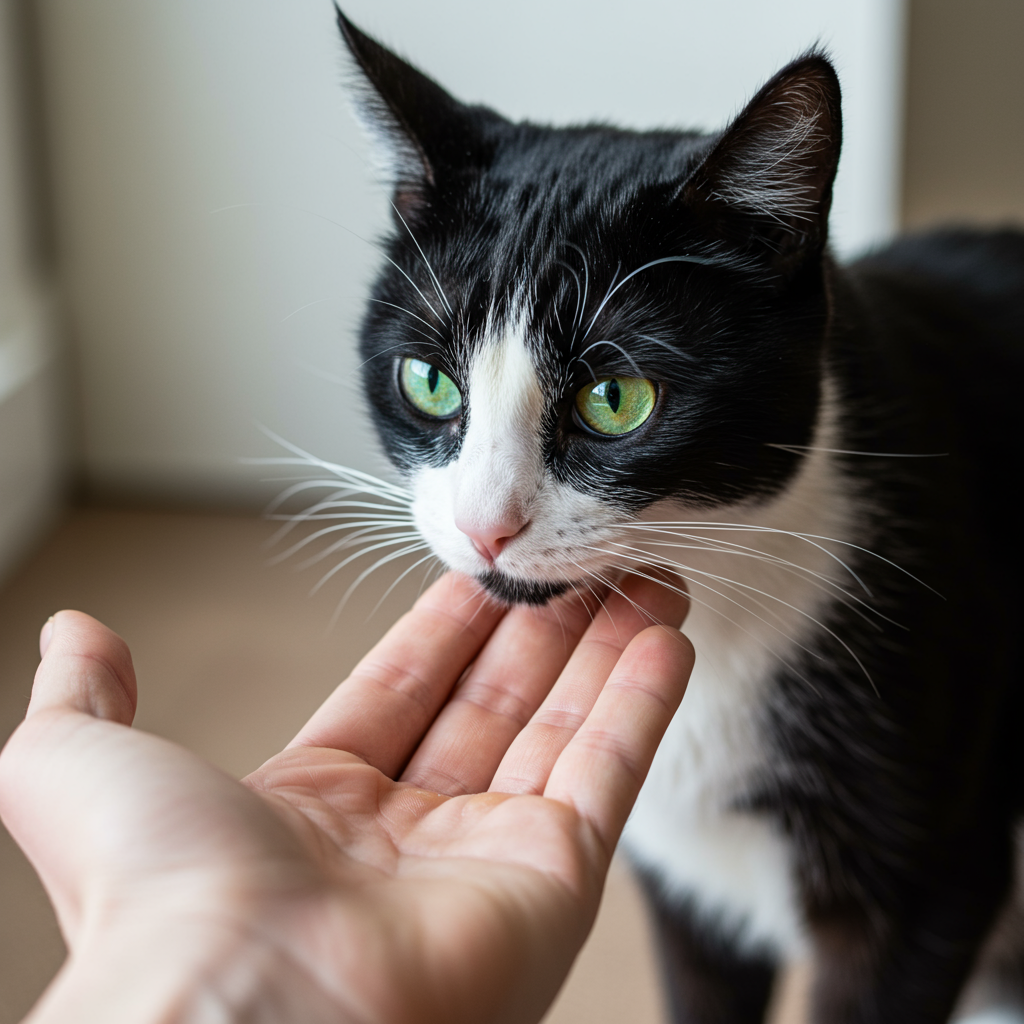Do cats really know who we are? While their independence might suggest otherwise, a new study adds a fascinating layer to how our feline companions perceive us: through scent. Research from Tokyo University of Agriculture confirms that domestic cats can distinguish the smell of their owner from that of a stranger.
This finding builds on existing knowledge that cats possess a sophisticated sense of smell, primarily used for communication within their own species. But its role in recognizing humans hasn’t been extensively explored until now. Previous studies have shown cats recognize voices, interpret our gaze to find things like food, and can even pick up on human emotional states via subtle odour cues. Now, smell joins the list of senses cats use in interacting with people.
How the Study Uncovered Feline Olfaction
The study involved presenting 30 domestic cats with scent samples collected on cotton swabs. These swabs, taken from areas like underarms, behind the ears, and between toes, were placed in plastic tubes. Cats were given three types of samples to investigate:
The scent of their owner.
The scent of an unknown person of the same sex as the owner.
A clean, unscented swab as a control.
Researchers carefully observed and timed how long the cats spent sniffing each tube.
The Key Finding: Stranger Scents Get More Attention
The results were clear: cats spent significantly more time sniffing the tubes containing the odour of an unknown person compared to those holding their owner’s smell or the blank control tubes. This increased investigation time for unfamiliar scents strongly suggests that cats can discriminate between the smells of familiar and unfamiliar humans based on olfaction alone. This behaviour mirrors how kittens might spend longer sniffing an unknown female cat versus their mother, indicating a natural tendency to explore novel scents more thoroughly.
Beyond Just Sniffing Time: Nostril Preference and Personality
Interestingly, the study also revealed more subtle nuances in cat behaviour. Cats initially showed a tendency to use their right nostril when investigating unfamiliar scents, potentially linking to brain lateralization where the right hemisphere is more involved in processing novel information. As they became more familiar with a scent, they might switch to using their left nostril, associated with the left hemisphere’s processing of routine or familiar stimuli – a pattern seen in other animals too.
Furthermore, feline personality seemed to play a role, particularly in male cats. Using a personality framework called “The Feline Five,” researchers found that male cats identified as more “neurotic” (anxious, shy, suspicious) tended to return to the scent tubes and sniff them repeatedly. In contrast, more “agreeable” male cats (affectionate, friendly) sniffed more calmly and rarely revisited the samples. This link wasn’t observed in female cats during the experiment.
Cats were also observed rubbing their faces against the tubes after sniffing. This common feline behaviour, used for scent marking territory, suggests that sniffing might act as an initial exploratory step before a cat decides to mark something with its own scent glands.
Important Caveats: Discrimination vs. Specific Identification
While the study definitively shows cats distinguish between familiar and unfamiliar human smells, the researchers, including author Hidehiko Uchiyama, are careful about over-interpreting the results. The experiment only compared the owner’s scent to that of one unknown person.
The study cannot conclude that cats can use smell alone to identify a specific individual* by name or relationship (e.g., “this specific smell is my owner”). To prove specific person recognition by scent, future studies would need to present cats with odours from multiple known individuals and look for unique behavioural responses triggered only by the owner’s scent.
An independent expert, Serenella d’Ingeo, agreed that the findings show discrimination but cautioned that the study doesn’t fully reveal the cat’s motivation or emotional state during the sniffing. She also noted that the owner’s presence during sample presentation might have influenced results, potentially making the unfamiliar scent relatively more interesting compared to the familiar owner’s scent already in the environment.
What Does This Mean for Cat-Human Bonds?
This research confirms that olfaction is a confirmed modality cats use for the recognition of humans. While they also rely on voice, appearance, and context, their powerful nose is clearly involved in figuring out who’s who.
The study doesn’t necessarily imply a deep, dog-like attachment based on smell alone. Cats are often perceived as more independent. However, knowing that they can distinguish your unique scent adds a layer of depth to the human-cat relationship, confirming that even when they seem aloof, they likely know you’re not just a stranger passing by. The intricate ways cats process our presence, involving senses like smell, personality, and perhaps even brain lateralization, underscore the complex and still often mysterious nature of our feline companions.
References
- https://www.bbc.com/news/articles/cvg5v11dv29o
- https://www.bbc.co.uk/news/articles/cvg5v11dv29o
- https://www.dw.com/en/cats-can-sniff-out-owners-japanese-study-research/a-72696628
- https://neurosciencenews.com/cat-olfaction-owner-29149/



